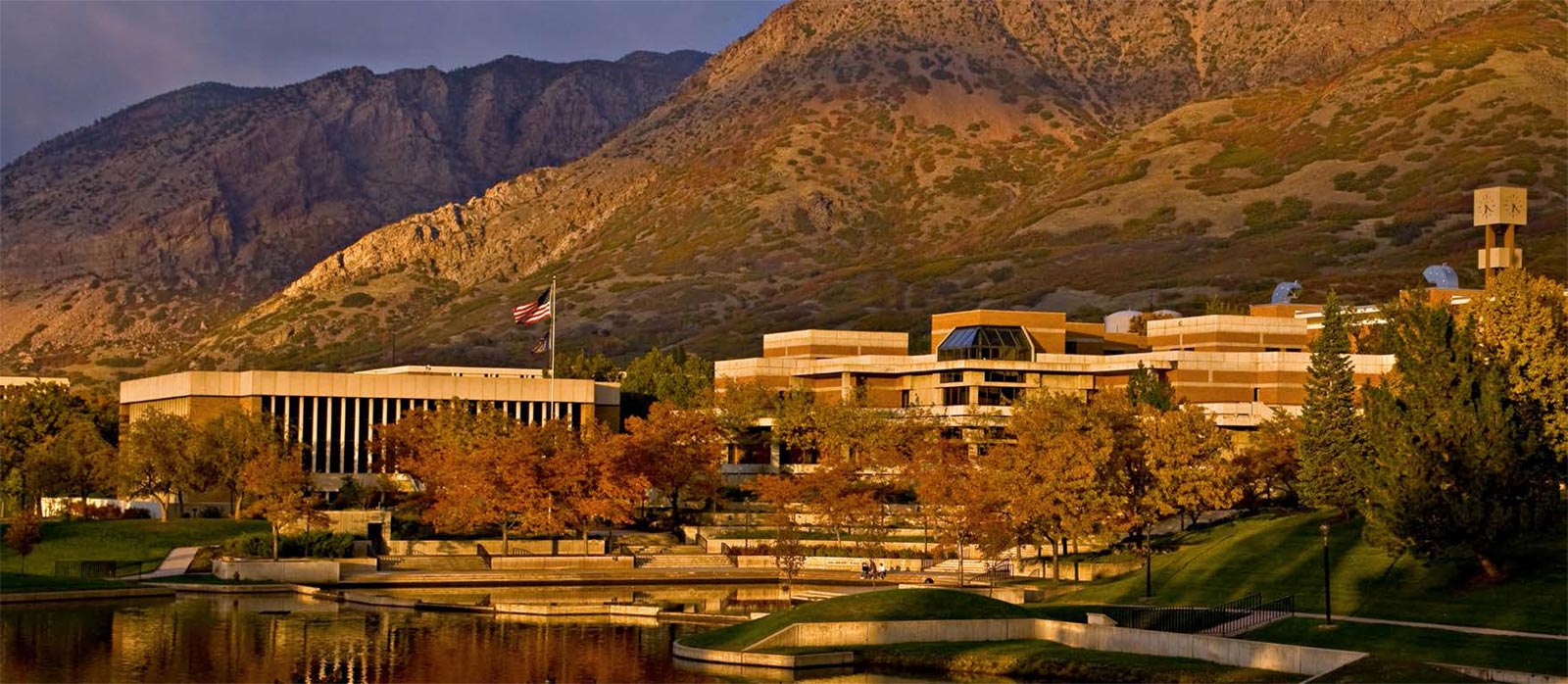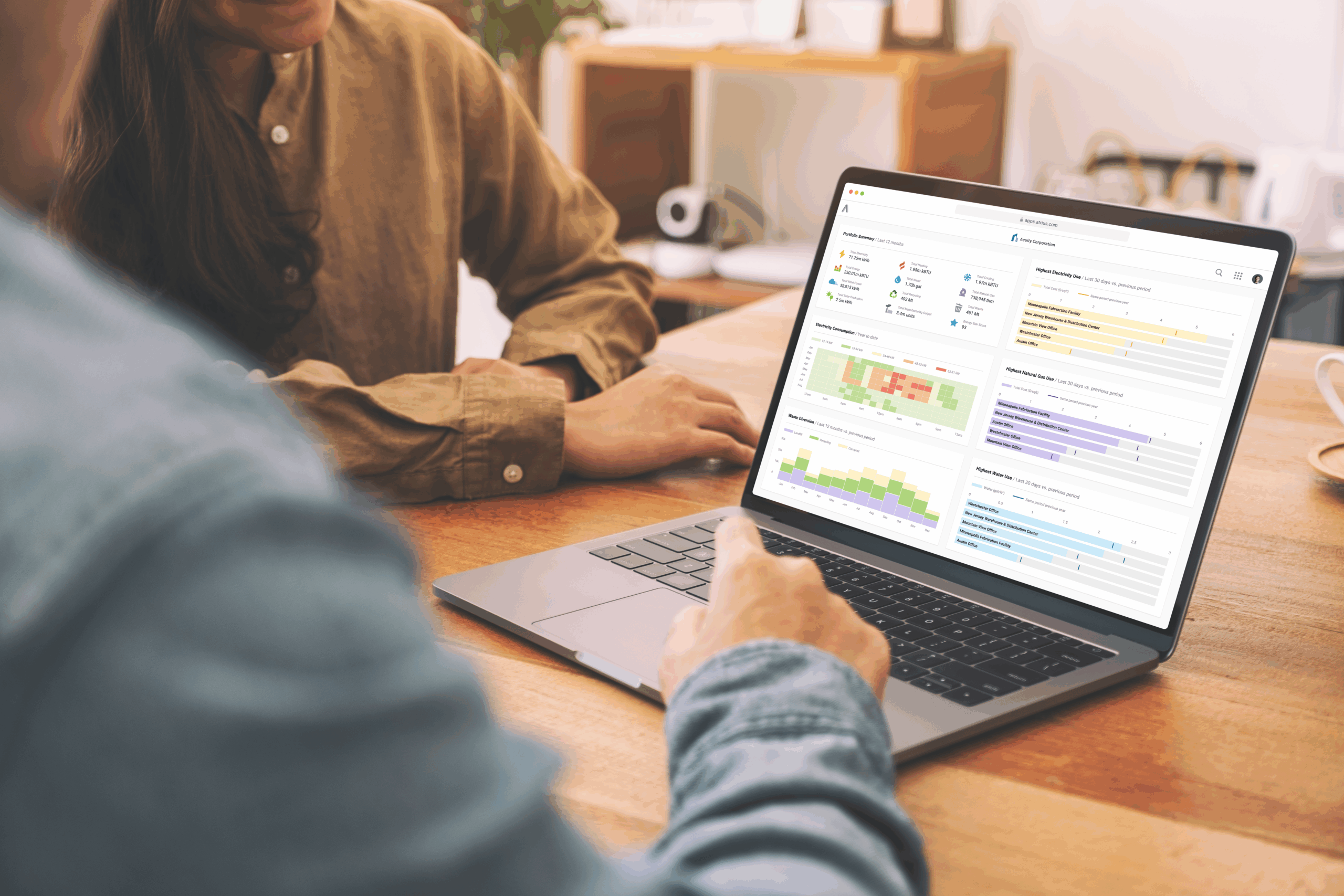Weber State University uses Atrius Sustainability and Atrius Energy to facilitate a campus-wide transformation to Net Zero Energy. By leveraging Atrius solutions to bring all metering and building systems online in 2013, the sustainability team was able to identify and target $1.4 million of energy savings on the campus in 2013 and $1.6 million of energy savings in 2014, resulting in a 33% reduction of their planned annual energy budget. Of that savings, $400,000, or 9% of total energy savings, came directly from scheduling optimizations and operational efficiency improvements enabled by Atrius’ intuitive analytics applications.
Weber State is actively pursuing Net Zero Energy status
Weber State University in Ogden, Utah has a strong focus on sustainability and has put significant resources into transforming the way the campus consumes energy. In 2007, Weber signed the American College & University Presidents’ Climate Commitment, officially committing to becoming a carbon-neutral campus by 2050. Since then, the Weber State team has prioritized energy efficiency, renewables, and behavioral change programs — and they are already well on their way to achieving their ambitious goal.
Jacob Cain, Weber State’s Energy & Sustainability Manager, runs the university’s entire energy management apparatus. Along with a team of 11 employees, including two full-time electricians and plumbers, his primary goal is to bring the university closer to Net Zero Energy, thereby significantly decreasing the university’s energy costs. To that end, his team participates in ongoing projects around data analysis, development, utility planning, water management, waste management, and recycling.

Challenge: Ad-hoc efficiency projects were not doing enough to meet energy reduction targets
When Cain first joined, he looked into hiring an energy consulting company (ESCO), but quickly determined that it wouldn’t offer the flexibility he needed to customize projects and make changes to the contractual plan. Not wanting to be locked into a long-term contract, the Weber State team decided to keep the project management in-house.
The sustainability team began implementing projects on an ad-hoc basis that they thought would decrease energy use. Their first approach was to conduct one-off audits of specific buildings, putting together calculations based on short-term sample data. However, this became problematic because the process was difficult to manage and took a lot of time to implement. The team was not hitting milestones as quickly as they wanted; they realized that what they really needed was more granular, portfolio-wide data to guide their decision-making.
3 Ways Real-Time Data Enables Energy Savings
- Problem Identification: Pinpoint highest-ROI projects quickly.
- Ongoing Commissioning: Ensure the building is conforming to expectations.
- Fault Detection & Verification: Identify problems in real-time and reduce waste.
“The [Building Automation System] software does many other things. It’s complicated and cumbersome, and that has been frustrating.”
Jacob Cain, Weber State’s Director of Plant Operations
Solution: Install building sub-meters and use Atrius solutions to collect granular insights
Because Weber State needed a robust set of data tools to streamline project management and speed up performance in energy efficiency, the sustainability director made the strategic decision to purchase sub-metering systems for the university’s entire portfolio and to make that data instantly accessible with Atrius. Access to real-time data at the sub-meter level allows his team to accurately pinpoint which buildings and systems are consuming the most energy, and when. Since the university has quantitative energy cost reduction targets, insights gleaned from Atrius analytics help prioritize the project pipeline, enabling the creation of financial models for validating projects.
Weber State’s Atrius Sustainability and Atrius Energy integration connected their existing building automation system to Atrius-provided Tridium JACE and Obvius data loggers. The increased logging added to the granularity of data that Weber is now tracking, allowing them to monitor multiple points of data in each building.
Weber State chose Atrius for this important project due to the competitive price point and intuitive functionality. They also evaluated the software that was packaged with their Building Automation System (BAS), but found that it did not give them easy access to the data they needed. “The BAS software does many other things. It’s complicated and cumbersome, and that has been frustrating,” said the sustainability director.
Atrius Sustainability and Atrius Energy have become key tools in Weber State’s efficiency pipeline
Atrius’ meter data is critical in optimizing Weber State’s pipeline of retrofit projects. Specifically, the team uses the Heat Map App to pinpoint which buildings are performing poorly, following up with on-site audits to finalize project decisions. The portfolio-wide data access from Atrius software eliminates the guesswork about where retrofits are needed most.
The Weber State team also uses the Atrius Building Dashboard application as a component of their energy engagement strategy. Building Dashboard publicly displays Weber State’s real-time energy data on the university website, as well on several touch-screen kiosks across campus. Students engage in energy savings competitions, such as Atrius Campus Conservation Nationals, using the data from the dashboards to make behavioral decisions that result in energy savings.
“Weber State chose Atrius for this important project due to the competitive price point and intuitive functionality.”
Atrius harnesses energy data for use by the entire campus and beyond
The sustainability team uses Atrius software in several different ways. The facilities team uses energy output data to properly size backup generators whenever there is an electrical shutdown for maintenance. Electricians on the team use the data to conduct fault leak detection whenever they notice a spike in the data. The teams also set up notifications using the alerts functionality to notify them any time something unusual is happening. And it’s a good thing, too: before they began to monitor real-time data with Atrius Sustainability and Atrius Energy, Weber State had a water leak that lasted for several months before anyone found it.
Atrius also allows the Weber State sustainability team to make energy data accessible to other entities on campus. Landscapers can now track data from their irrigation projects, and project managers can adjust the sizing of equipment in new building construction. On the educational side, professors and students on campus use the data to conduct research on energy efficiency and LEED policies.
Weber State opens up its data to anyone who needs it. Recently, state legislators in Utah used Weber State’s Atrius data to conduct an analysis of building energy use for a new state building they were planning. The data enabled them to confirm usage projections for a $60 million building.
The Importance of Real-Time Energy Monitoring: A Real-World Example
- A leaky overflow valve in a cooling tower on the campus was leaking for months without anyone noticing.
- Thousands of gallons of water went wasted, which led to thousands of dollars of avoidable expenses.
- With real-time monitoring through Atrius Sustainability and Atrius Energy, the leak would have been caught earlier.
Weber State uses measurement & verification tools in Atrius software to quantify the impact of their energy initiatives
Weber State uses Atrius Sustainability and Atrius Energy to compare building performance and prioritize retrofit work. In 2013, after noticing that some buildings in the new part of campus were consuming a large amount of energy, the sustainability team targeted specific buildings for infrastructure improvements. An array of options were considered, but the team settled on installing an Indirect Evaporative Cooling system (IDEC) to replace their air conditioning unit. The IDEC system is an alternative to traditional AC units, and works well given Utah’s hot and dry air.
Once the Davis 3 project was completed and the team found substantial savings, they targeted the Davis 2 building nearby as a source of additional savings from an IDEC system. Initially, the team used Atrius data to pull some numbers from the Davis 3 building and estimate the savings. Estimated savings were about 20% of current electricity use for Davis 2, so the team felt that provided them enough ROI to justify installing a new IDEC system. Once this was done, the team went back to measure and verify the actual results from the retrofit. The IDEC system ended up saving Weber State over 30% when all was said and done, which was the equivalent of about $20,000 in savings on an annualized basis.
Weber State saved $1.4 million in 2013 and $1.6 million in 2014 using Atrius software to identify, scope, and verify projects
Weber State has a budget policy that allows the sustainability team to get credit from the administration for energy projects. Whenever the projects pay dividends through electricity savings, the sustainability team gets to keep the profits and use them to pay back the loans on the equipment. In 2013, Weber State’s energy budget was $4.2 million, which was the estimated cost that the school would pay for energy throughout the year.
Weber State’s sustainability team only spent 2⁄3 of that and managed to eliminate 33% of their budgeted energy spend. Throughout 2013, the sustainability team recovered $1.4 million in energy savings through an array of projects including building management improvements, lighting retrofits, and infrastructure changes. A key tool in their arsenal, Atrius Analytics Apps helped Weber State optimize HVAC system scheduling across campus, accounting for about $400,000 in energy savings across campus.
Ultimately, savings from operational efficiency improvements through Atrius were responsible for 30% of overall energy savings on the campus. Operational savings also helped Weber State save 9% of their total energy budget that year.
More than just money: Atrius saves Weber State time and makes the department more efficient
Beyond direct monetary savings, time savings are another advantage of using Atrius. Having everything in one location makes data collection and analysis much quicker. From pulling up data in meetings on the fly, to extensive planning analyses, having data in one place enables faster decision-making. Use of the systems allows for data to be a large part of the picture in key discussions and enables a data-driven culture inside the organization.
Access to real-time data also makes energy management much easier. When the highest ROI project is identified ahead of time, managers reduce risks because they have clarity over where they can be most effective. Departmental efficiency and large energy savings become easier to achieve when buildings in a portfolio come online and reveal their usage information.



